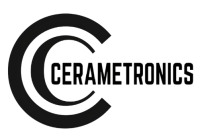Optoelectronics
is a rapidly growing field of technology that has revolutionized many industries by converting light into electrical signals or vice versa. For reliable and long-lasting operation, optoelectronics requires materials with excellent dimensional stability, thermal performance, and chemical resistance. Metalized ceramics serve as an ideal solution for these requirements, offering robust ceramic substrates for optoelectronic applications.
What are Metalized Ceramics?
Metalized ceramics are ceramic materials coated with a thin layer of metal through a process called metallization. The metal layer provides a conductive surface that can be used to attach electronic components such as photodiodes, LEDs, and laser diodes. Silver, gold, platinum, and palladium are some of the most commonly used metals for metallization.
Benefits of Ceramic Substrates
Ceramic substrates provide a mechanically stable and thermally conductive base for electronic components. Ceramic substrates with metalized layers offer excellent thermal conductivity and mechanical strength, allowing for high power density designs. Additionally, ceramic substrates are highly reliable, with excellent resistance to thermal and mechanical stress.

Importance of Precise Circuit
In optoelectronic devices, precise circuit is another crucial aspect. Circuit refers to the optical and mechanical alignment between different components, such as a laser diode and a photodiode. Precise circuit ensures optimal performance and long-term stability of optoelectronic devices. Metalized ceramics with precision circuit features are available for applications that require high-precision optical alignment.
Benefits of Metalized Ceramics
The use of metalized ceramics in optoelectronics provides several benefits. First, these materials offer excellent dimensional stability, ensuring precise and stable optical alignment over a long period of time. Second, metalized ceramics have high thermal conductivity, allowing for efficient heat dissipation from electronic components. Finally, the chemical resistance of metalized ceramics makes them ideal for use in harsh environments where other materials might corrode or degrade.
Other Materials in Optoelectronics
In addition to metalized ceramics, other materials such as sapphire and diamond are also used in optoelectronics. Sapphire is an excellent material for LED applications due to its high thermal conductivity and optical transparency. Diamond is used in applications such as high-power lasers due to its excellent thermal conductivity and mechanical strength.

The use of metalized ceramics in optoelectronics is crucial for achieving high performance and reliability. Ceramic substrates with metalized layers, combined with precise circuit features, offer a robust and reliable solution for optoelectronic applications. With the growing demand for efficient and reliable optoelectronics in various industries, the importance of metalized ceramics is likely to increase in the future.

